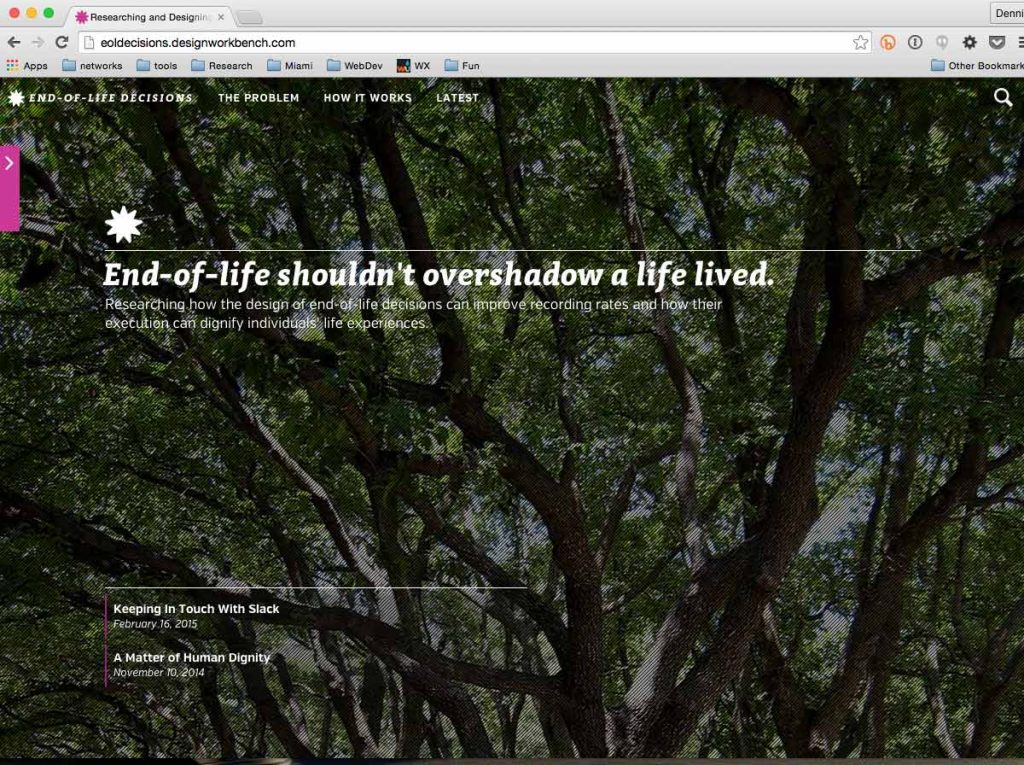End-of-Life Decisions: Using Systemic Approaches to Research the Conversations Americans Aren’t Having

Recent research indicates that only between 18% and 30% of Americans have taken the time to record their wishes for what they would want to have happen to them if they were physically incapacitated and unable to speak for themselves (Maller, 2013). The overall population of the United States is rapidly aging as “baby boomers” who were born after World War II between 1946 and 1968 are beginning to near the end of their lives. As a result, unless recording rates of peoples’ end-of-life decisions increases, an increase in the emotional and financial burdens families and medical professionals experience at a loved ones’ end-of-life will likely also increase.
This paper shares how our team of researchers in design, gerontology, and philosophy at several universities in Ohio, is researching and addressing end-of-life decisions systemically. The complex nature of the problem is reviewed, specifically how a systemic design approach has encouraged our team’s simultaneous consideration of the emotional, physical, financial, cultural, phenomenological dynamics of the issue. This holistic view of the problem has affected the operation of the research in some positive and also challenging ways and implications for systemic design’s role in healthcare problems is addressed. Details on the process of how our team began to map the problem and decide upon specific entry points for field research is expounded upon. Our ongoing, evolving research process is presented, depicting how our team’s approach to data collection and theory building at the micro-level has helped to clarify the nodes and connections within the overall end-of-life decisions problem.
Keywords
end-of-life, healthcare, aging, design, co-creation
